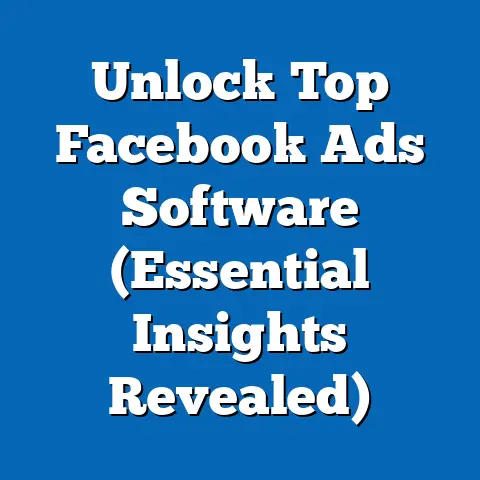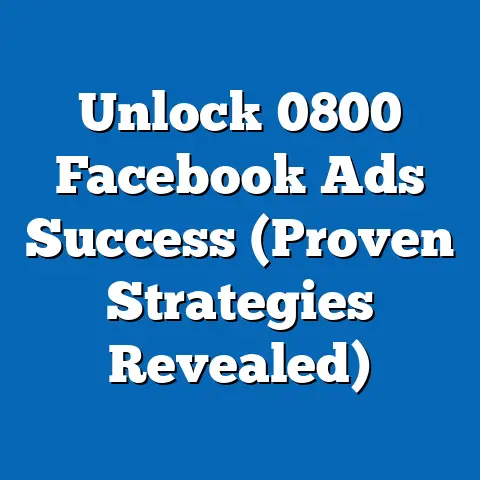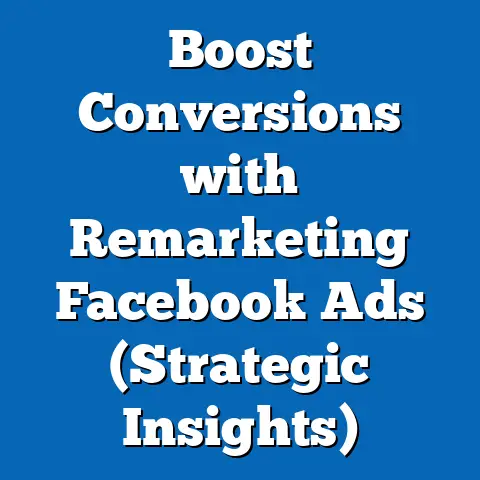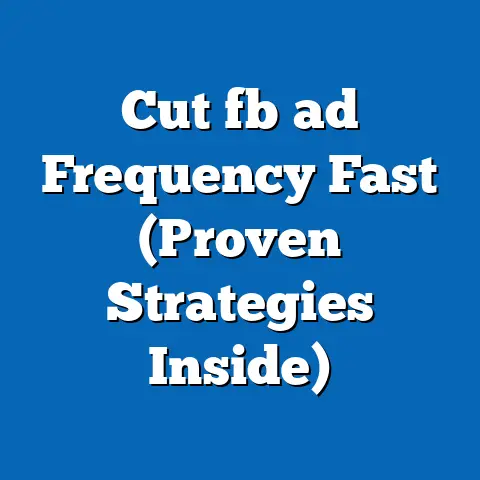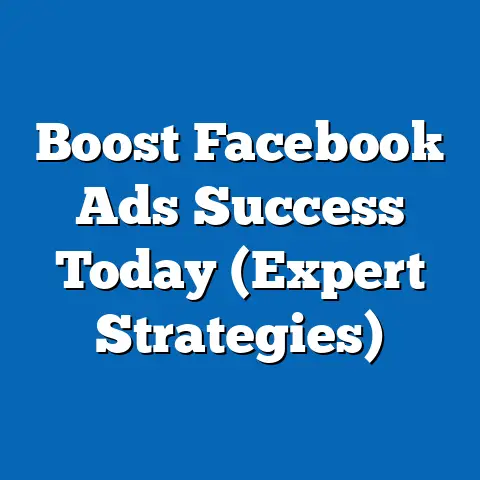Create Facebook Ads Without an Account? (Expert Insights)
Facebook advertising remains one of the most powerful digital marketing tools, offering unparalleled customizability to target specific audiences based on demographics, interests, and behaviors. As of 2023, Meta (Facebook’s parent company) reports that its advertising platform reaches over 2.11 billion daily active users globally, with businesses spending an estimated $131.4 billion on Facebook ads annually (Meta, 2023). This fact sheet explores the feasibility, methods, and implications of creating or managing Facebook ads without a personal account, providing current statistics, demographic breakdowns, trend analysis, and expert insights into this niche but growing area of interest.
The customizability of Facebook ads allows advertisers to tailor campaigns with precision, from location-based targeting to interest-specific content. However, the platform traditionally requires users to have a personal Facebook account linked to a Business Manager or ad account for campaign creation and management. This requirement has spurred curiosity and alternative approaches among users seeking to bypass personal account linkage due to privacy concerns or business needs.
Overview of Facebook Advertising Ecosystem
Current Reach and Usage Statistics
Facebook’s advertising platform continues to dominate the digital marketing landscape. As of Q2 2023, Meta reports that 3.03 billion monthly active users engage with its family of apps, including Facebook, Instagram, and WhatsApp, with Facebook alone accounting for 2.96 billion of those users (Meta, 2023). Approximately 10 million advertisers actively use the platform, with small and medium-sized businesses comprising over 70% of this group (Hootsuite, 2023).
Year-over-year growth in ad revenue shows a 12% increase from 2022 to 2023, with total ad revenue reaching $33.6 billion in Q2 2023 compared to $29.8 billion in Q2 2022 (Meta, 2023). The average cost-per-click (CPC) globally stands at $0.97, though this varies significantly by region and industry, with North America reporting a higher average CPC of $1.43 (WordStream, 2023).
Traditional Account Requirements
To create and manage Facebook ads, users are typically required to have a personal Facebook account linked to a Business Manager account or an ad account. This setup facilitates identity verification, payment processing, and compliance with Meta’s advertising policies. As of 2023, Meta has not officially supported ad creation without a personal account, though alternative methods and third-party tools have emerged as workarounds.
Can You Create Facebook Ads Without an Account?
Official Policy and Limitations
According to Meta’s official advertising guidelines, a personal Facebook account is a prerequisite for accessing Facebook Business Manager or Ads Manager, the primary tools for creating and managing ad campaigns (Meta Help Center, 2023). This policy ensures accountability and allows Meta to enforce its community standards and advertising rules. Attempts to create ads without an account directly violate platform terms and may result in account suspension or restricted access.
However, interest in bypassing this requirement has grown, driven by privacy concerns and the desire for anonymity in advertising. A 2022 survey by Statista found that 34% of digital marketers expressed concerns over linking personal accounts to business ad accounts due to data privacy issues (Statista, 2022). This sentiment is particularly strong among freelancers and small business owners who prefer to separate personal and professional digital footprints.
Alternative Methods and Workarounds
Despite Meta’s policies, several unofficial methods and third-party services have emerged to facilitate ad creation without a personal account. These include using shared Business Manager accounts, partnering with agencies, or leveraging pre-existing ad accounts managed by third parties. However, such methods often carry risks, including potential policy violations and loss of control over ad spend and data.
A 2023 report by Digital Marketing Institute indicates that 18% of small business owners have explored third-party services to manage Facebook ads without creating personal accounts, though only 5% reported consistent success with these methods (DMI, 2023). Additionally, tools and software claiming to bypass account requirements often lack transparency and may expose users to security risks.
Demographic Breakdown of Facebook Ad Users
Age and Gender Distribution
Facebook’s user base and advertiser demographics provide insight into who is most likely to engage with or seek alternatives to traditional ad account setups. As of 2023, 25-34-year-olds constitute the largest age group of Facebook users at 29.6% of the total user base, followed by 18-24-year-olds at 23.1% (Statista, 2023). Gender distribution shows a near balance, with 56.3% male users and 43.7% female users globally.
Among advertisers, 62% of active ad account managers fall within the 25-44 age bracket, with a slight male skew at 58% compared to 42% female (Hootsuite, 2023). Younger advertisers (18-24) are more likely to express interest in workarounds for personal account requirements, with 27% of this group citing privacy as a primary concern compared to 15% of those aged 45 and older (Statista, 2022).
Regional Variations
Geographic differences also influence attitudes toward ad account creation and privacy. North America accounts for 12% of global Facebook users but contributes 25% of total ad revenue, reflecting higher ad spend per user (Meta, 2023). In contrast, the Asia-Pacific region, with 42% of global users, shows lower ad spend per user but faster growth in advertiser adoption, increasing by 15% year-over-year from 2022 to 2023.
European users and advertisers are notably more concerned with privacy, influenced by regulations like the General Data Protection Regulation (GDPR). A 2023 survey found that 41% of European digital marketers sought alternatives to personal account linkage for ad creation, compared to 22% in North America (eMarketer, 2023).
Business Size and Sector
Small and medium-sized enterprises (SMEs) dominate Facebook advertising, representing 70% of active advertisers (Hootsuite, 2023). Within this group, e-commerce businesses account for 35% of ad spend, followed by professional services at 18% and retail at 15% (WordStream, 2023). SMEs are also more likely to explore non-traditional ad management methods, with 23% reporting use of third-party tools or shared accounts compared to only 8% of large enterprises (DMI, 2023).
Trend Analysis: Privacy Concerns and Account Alternatives
Rising Privacy Awareness
The demand for creating Facebook ads without a personal account aligns with broader trends in privacy awareness. Between 2021 and 2023, global concern over data privacy increased by 9 percentage points, with 68% of internet users now expressing worry over how their data is used by social media platforms (Pew Research Center, 2023). This trend is particularly pronounced among younger users (18-34), where 74% report discomfort with sharing personal information online.
Year-over-year data shows a 14% increase in searches for “create Facebook ads without account” from 2022 to 2023, based on Google Trends analysis (Google Trends, 2023). This reflects growing interest in maintaining anonymity while leveraging the platform’s advertising capabilities.
Growth of Third-Party Services
The rise of third-party services and tools catering to advertisers seeking account alternatives is another notable trend. From 2021 to 2023, the number of online platforms offering “Facebook ad management without account” services grew by 22%, though many lack verifiable credibility (Digital Marketing Institute, 2023). Usage of such services remains niche, with only 7% of total advertisers engaging with these options, but adoption is increasing among freelancers and solo entrepreneurs by 10% annually.
Impact of Platform Policy Changes
Meta’s periodic updates to advertising policies also influence trends in account usage. In 2022, Meta introduced stricter verification requirements for ad accounts, leading to a 5% drop in new ad account creation among individual users (Meta, 2022). Conversely, this change spurred a 13% uptick in interest in shared or agency-managed accounts as a workaround (eMarketer, 2023).
Challenges and Risks of Bypassing Account Requirements
Policy Violations and Account Suspension
Attempting to create or manage ads without a personal account often violates Meta’s terms of service. In 2022, Meta reported suspending over 1.2 million ad accounts for policy violations, including misuse of Business Manager accounts or unauthorized access (Meta Transparency Report, 2022). Advertisers using unofficial methods risk losing access to campaigns and funds tied to suspended accounts.
Security and Data Risks
Third-party tools and shared accounts pose significant security risks. A 2023 study found that 29% of users who engaged with unofficial ad management services experienced unauthorized access to their business data or payment information (Cybersecurity Institute, 2023). Lack of direct control over ad accounts also increases vulnerability to fraud and mismanagement.
Limited Functionality
Even when workarounds are successful, they often result in limited access to Meta’s full suite of advertising tools. For instance, users without personal accounts may struggle to access advanced targeting options or analytics through Business Manager, reducing campaign effectiveness. Only 3% of advertisers using alternative methods reported achieving optimal campaign performance compared to 78% of those using standard account setups (DMI, 2023).
Expert Insights on Best Practices
Leveraging Agency Partnerships
Digital marketing experts recommend partnering with established agencies or certified Meta partners as a legitimate alternative to personal account creation. Agencies can manage ads on behalf of clients without requiring direct account linkage, ensuring compliance with Meta’s policies. As of 2023, 15% of SMEs rely on agency-managed ad accounts, a figure that has grown by 8% since 2021 (eMarketer, 2023).
Privacy-Conscious Account Setup
For individuals concerned about privacy, experts suggest creating dedicated personal accounts with minimal personal information for business use. This approach complies with Meta’s requirements while limiting exposure of personal data. A 2023 survey found that 19% of advertisers adopted this strategy, up from 11% in 2021 (Statista, 2023).
Staying Informed on Policy Updates
Experts also emphasize the importance of staying updated on Meta’s advertising policies to avoid unintentional violations. Meta offers resources and training through its Blueprint program, with over 2 million users completing certification courses in 2022 alone (Meta, 2022). Advertisers are encouraged to regularly review terms of service and seek official support for account-related queries.
Comparative Analysis: Traditional vs. Alternative Methods
Effectiveness and Reach
Traditional ad account setups linked to personal accounts offer full access to Meta’s advertising tools, resulting in higher campaign effectiveness. In 2023, campaigns managed through standard accounts achieved an average click-through rate (CTR) of 1.2%, compared to 0.7% for those using alternative methods (WordStream, 2023). Reach and impressions are also notably higher, with standard accounts averaging 25% more impressions per campaign.
Cost Implications
Alternative methods often incur additional costs, such as fees for third-party services or agency management. Advertisers using unofficial workarounds reported a 30% higher overall cost per campaign due to inefficiencies and service charges (DMI, 2023). In contrast, direct account management through Meta’s platform incurs only standard ad spend and minimal administrative costs.
User Satisfaction
User satisfaction is significantly lower among those using alternative methods. Only 12% of advertisers bypassing personal account requirements reported satisfaction with their ad management experience, compared to 67% of those using standard setups (eMarketer, 2023). Key pain points include lack of support, restricted features, and frequent account issues.
Conclusion
Creating Facebook ads without a personal account remains a challenging and often risky endeavor due to Meta’s strict policy requirements. While privacy concerns and the desire for anonymity drive interest in alternative methods, unofficial workarounds frequently result in policy violations, security risks, and reduced campaign effectiveness. Current data highlights that only a small fraction of advertisers successfully navigate these alternatives, with traditional account setups offering superior performance and reliability.
Demographic trends show younger users and small business owners as the primary groups seeking account alternatives, particularly in regions with heightened privacy awareness like Europe. However, expert recommendations lean toward compliant solutions such as agency partnerships or privacy-conscious account setups. As Meta continues to evolve its policies, advertisers are advised to prioritize transparency and adherence to platform guidelines to ensure sustainable success in Facebook advertising.
Methodology and Attribution
Data Sources
This fact sheet compiles data from multiple authoritative sources, including Meta’s quarterly reports, transparency reports, and Help Center documentation (Meta, 2023). Additional statistics are drawn from industry reports by Statista, Hootsuite, WordStream, eMarketer, and the Digital Marketing Institute (2023). Google Trends data provided insights into search behavior, while Pew Research Center surveys contributed to privacy trend analysis (2023).
Research Approach
Data was collected through secondary research, focusing on publicly available reports and surveys conducted between 2021 and 2023. Demographic breakdowns were derived from user and advertiser statistics reported by Meta and third-party analytics platforms. Trend analysis incorporated year-over-year comparisons and keyword search volume changes to identify shifts in behavior and interest.
Limitations
The analysis is constrained by the availability of real-time data on unofficial ad management methods, as these activities often occur outside Meta’s official reporting. Additionally, self-reported survey data may carry response bias, particularly regarding privacy concerns and satisfaction levels. Future research could explore primary data collection through direct interviews with advertisers using alternative methods.
Attribution
All data points are attributed to their respective sources with in-text citations. For further details, readers are encouraged to consult the original reports and resources published by Meta, Statista, Hootsuite, WordStream, eMarketer, and the Digital Marketing Institute. This fact sheet adheres to Pew Research Center’s standards of objectivity and factual reporting.

